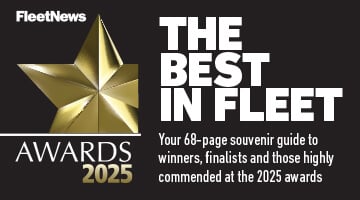Fleet managers know that some drivers may require certain models out of necessity rather than choice.
If a disabled employee needs a company car, the choice of vehicle and some modifications will have to be considered.
The market for cars adapted for wheelchair access has surged during the past 40 years and there is a wide choice of options available to fleets.
Fleet managers trying to source a vehicle for a disabled driver will need to consider additional factors focusing on accessibility, comfort and safety.
Supplier choice
BEFORE sourcing a vehicle, it is worth checking that the supplier is Motability accredited. In some cases with cash-for-car employees, Motability can provide grants for expensive conversions. However, this is based on the financial circumstances of the driver. Motability is a charity that helps disabled people and their families become mobile using Government allowances.
Vehicle suppliers should have information on this and should also be able to provide details on vehicle conversions.
Linda Ling is managing director of Gowrings Mobility, a company that specialises in the manufacture of wheelchair passenger cars. She said: ‘One of the most important aspects of a supplier is that the staff are well trained and have expert knowledge, not just about their range of vehicles and conversion options, but also in the field of disability awareness and how different people’s disabilities relate to the vehicles they offer. Ask the company to explain any additional services they may offer such as roadside recovery, warranty and insurance deals. Many companies now offer a free, no obligation personal home demonstration and test-drive service. This is very useful, enabling drivers to test a vehicle in a local and familiar environment.’
Fleet decision-makers should also ensure they are kept informed of delivery dates and that there is a named member of staff that can be contacted for technical support or if problems arise.
Vehicle choice
THE right vehicle to suit the driver’s needs is crucial.
A two or three-door model will generally have wider doors that may be a consideration for drivers needing easy access or wanting to store a wheelchair in the vehicle.
The Department for Transport (DfT) produces downloadable fact sheets for disabled drivers on its website.
One of its fact sheets states: ‘If a powered wheelchair is to be stowed, an estate car or large hatchback will be needed. If a large amount of equipment has to be carried – or a folded wheelchair – the size of the hatch or boot will be critical.’
Fleet managers need to consider everything that may need to be carried in the car, including additional passengers.
Even when the vehicle has been chosen, additional modifications may have to made inside the cabin.
Conversions
VEHICLE conversions will be solely dependent on the requirements of the driver. Some may require slight changes, such as an extension to the indicator stalk; others may need a winch to lift a wheelchair into the vehicle.
Hand or pedal controls are modifications that can be made to accommodate disabled drivers. If a vehicle is adapted with hand controls, it is important that they are fitted professionally.
The DfT produces a specific fact sheet on the fitting of hand controls which says an adaptation specialist is needed, someone familiar with the type of control system being fitted to the car.
It states: ‘It is also essential to have the hand controls regularly maintained and checked. Hand controls are not checked as part of the standard MOT test, so it is the driver’s responsibility to take the vehicle to a reputable garage, the hand control manufacturer or the adaptation specialist to have the adaptations inspected when the car is serviced on a regular basis.’
Another adaptation that could be required is a pedal guard. This covers the foot control pedals and is used for drivers who have limited control or feeling in their lower limbs.
The DfT says: ‘It is easy for a foot to knock against or press on the foot pedals, which could lead to an accident.
‘It is also possible for the foot to be jammed under the foot pedals. If this happens, the controls could not be used and, again, an accident could be caused.
‘Pedal guards are very easily fitted and can be removed when the car is being driven with standard foot controls.’
Smaller adaptations can also be made for drivers whose disabilities are not as limiting.
The DfT advice adds: ‘Fit a key turner for those with limited finger dexterity or weakness in the wrist.
‘For those with a more severe disability, a push-button ignition can be fitted.’
Other options, according to the DfT, include fitting an easier-to-use handbrake or a cantilever or cam handbrake for those who lack strength.
An electric handbrake can also be added for more severe disabilities, although some cars, such as the Ford Focus C-MAX and Renault Scenic, have them as standard.
Tiptronic or electric push buttons can also be fitted instead of a manual gear stick.
Extensions can be fitted to indicator switches and an infra-red control box can be fitted to activate the indicators, wipers and lights from the steering wheel.
At the end of their time on the fleet, converted vehicles usually sustain high residual values and at British Car Auctions (BCA) there is often a strong demand. Graham Smith, general manager at BCA, said: ‘If a car has been converted we would usually sell it as converted. There is usually a huge demand when we have special sales of converted vehicles.’
Issues to consider for disabled drivers
Source: DfT
















Login to comment
Comments
No comments have been made yet.